Baths of Caracalla, Rome, 10-5-24
The Baths of Caracalla are the second largest ancient baths in Rome, the largest was the Baths of Diocletian but it no longer exists today as site resembling its original shape and function. The Baths are only about a 20 minute walk from the Colosseum but is nowhere near as popular a site for tourists. This cannot really be explained as it is a very impressive structure! The ancient public baths were built by Emperor Septimius Severus in 206 AD and completed by his son, Caracalla since 216 AD.
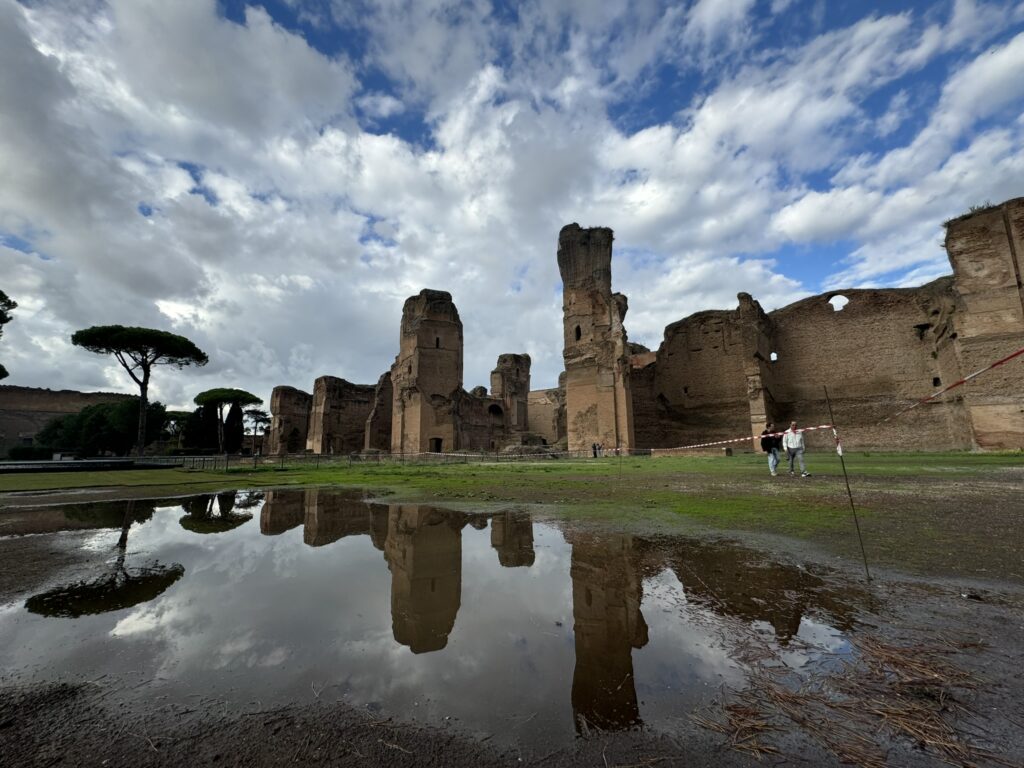
This is a sprawling 27-acre (1,000,000 SF) complex consisting of multiple buildings consisting of towering arches, expansive brick-faced concrete walls that rise high in the air. It is massive! 130’ tall. I felt very small there and was amazed by the baths grandiosity. The site is now open to the sky, when only the area over the main pool, the natation, which was open to the sky in the original building. The brick that we see today was covered by marble, mosaics and ornamented stucco work, topped with gigantic vaults containing coffers to reduce its weight, very much like the Pantheon’s concrete ceiling. These Roman bathing complexes were possible thanks to the system of aqueducts that were constructed to supply water to Rome. (citation: https://www.britannica.com/topic/Baths-of-Caracalla)
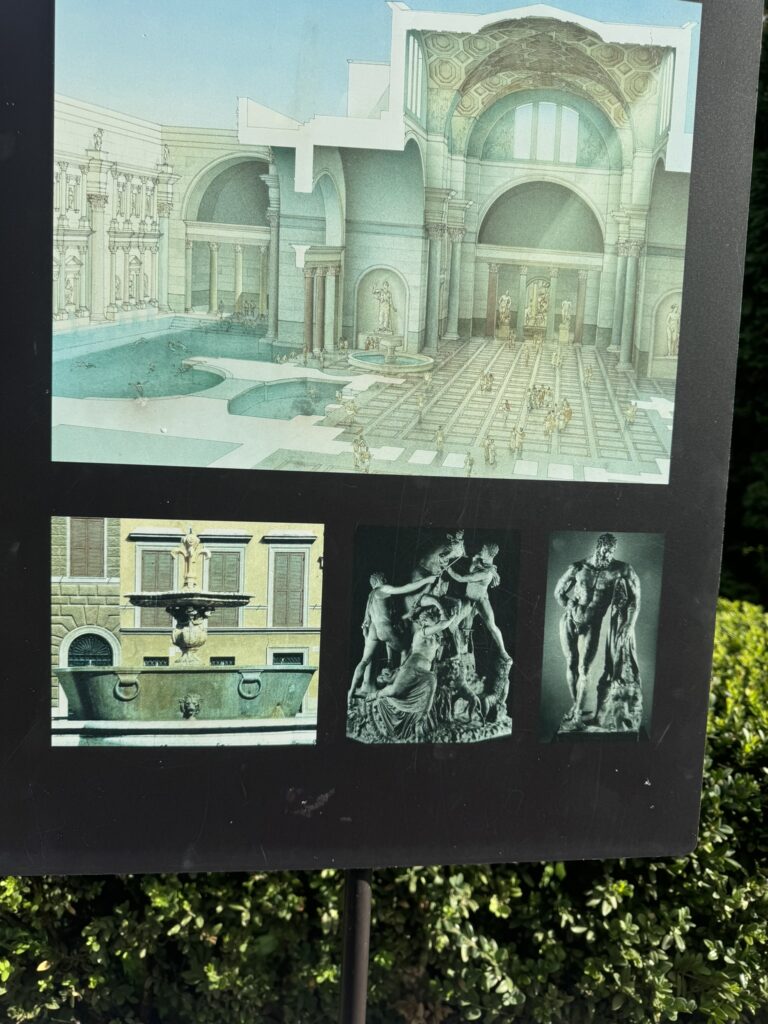
It was a norm in that time in urban Rome to bathe in the afternoon after daily exercise which was a part of a healthy way of life, and the facility welcomed thousands of bathers a day! There is a cistern store for the water, which was sourced by a spring or a lake. It was an engineering marvel with heating and drainage systems that were very sophisticated for the time. Underground were furnaces and cauldrons that brought hot water to the lead pipes of the water system.
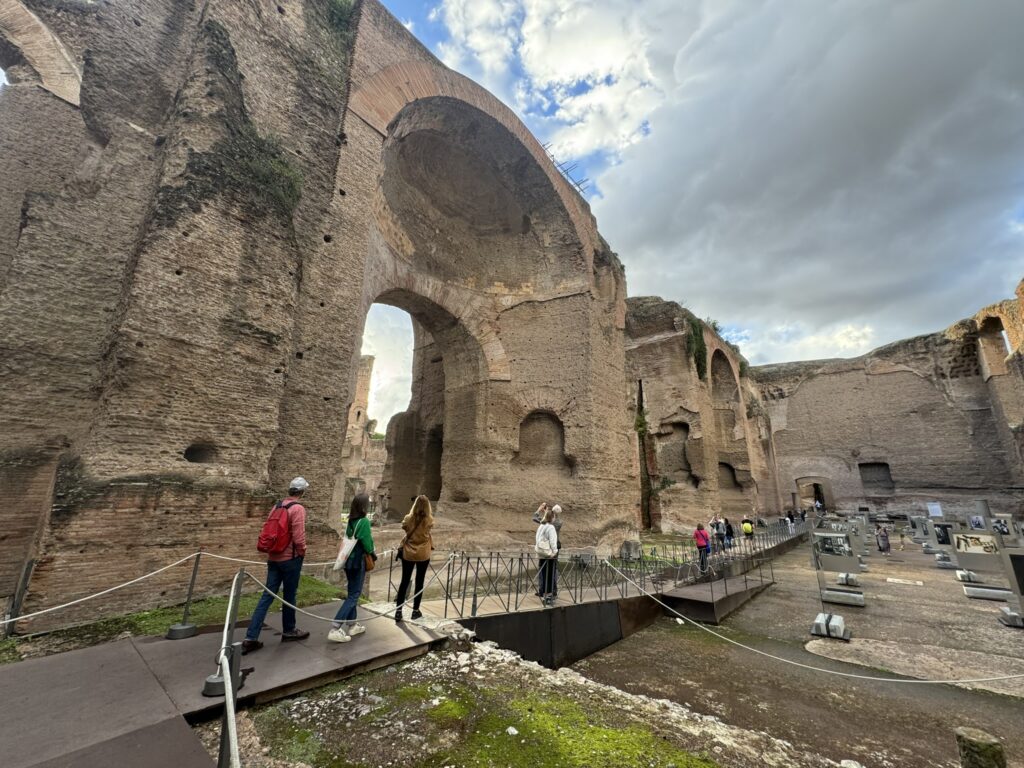
People also socialized there, played games and sometimes conducted business during their time at the baths. (citation: https://engineeringrome.org/baths-of-caracalla-a-case…/) The baths were free and open to the public,, everyone could enjoy the luxurious facilities paid by Imperial funds. The mosaic tile floors remain and can still be admired, as well as mosaics that used to adorn the walls. These works of art when not simply colorful patterns, also displayed floral and mythological figures.
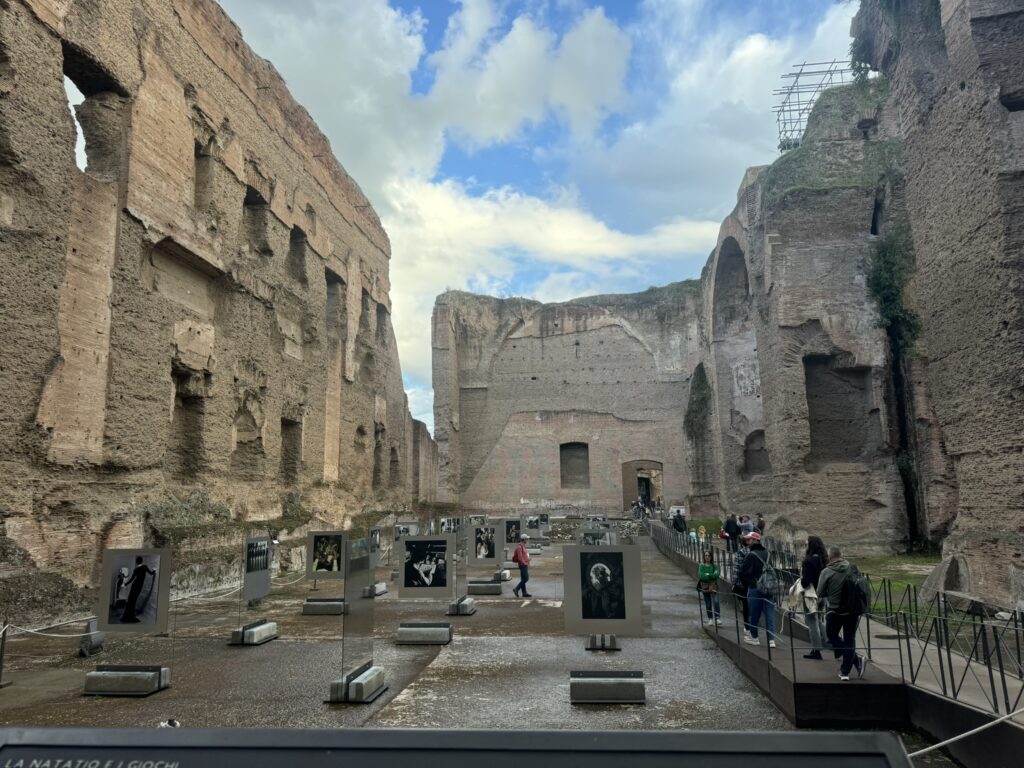
To view a fantastic renderings showing the change from the original great hall to what it is today, please visit this site: https://www.atouchofrome.com/baths-of-caracalla-explained…
The Baths of Caracalla consisted of:
• Dressing rooms
• Swimming pool
• A gym area
• A large hall that contained the baths. Hot baths to follow in Calidarium (pools in wall niches) then to tepidarium (warm baths) then frigidarium (cool baths).
• Steam rooms
• Sun rooms
• Garden
• Library
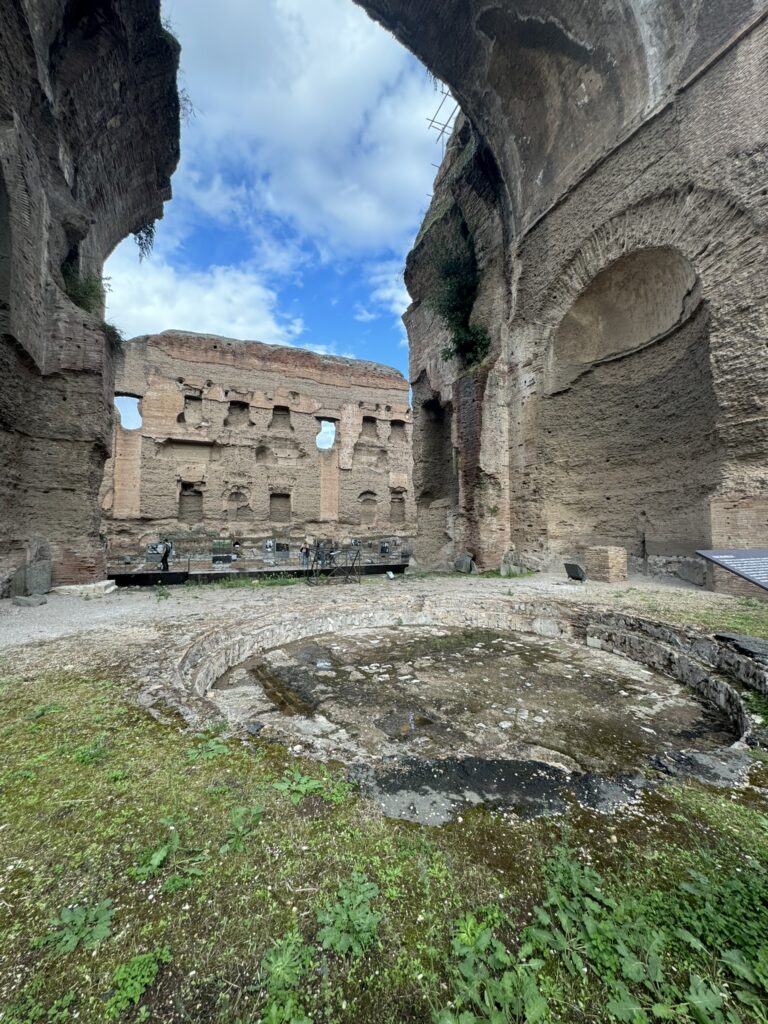
The columns that were a part of the Frigidarium were brought all the way from Egypt. The exposed brick that you can see today was adorned with lustrous marble panels, pilasters and decorations. Many bronze and marble statues, they say 120, were on display within the complex, Some sat high on granite columns on display above the main pool, adding to the luster of this place.
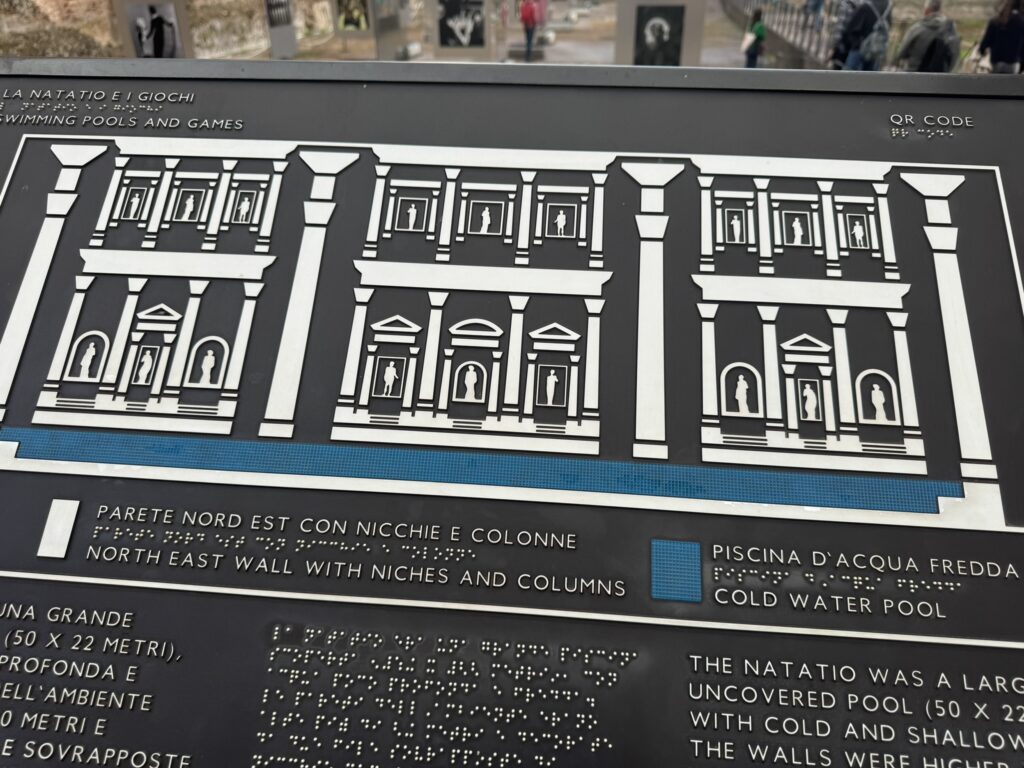
The Baths of Caracalla were used for nearly 300 years and were kept up through multiple restoration projects over those years. Abandoned in AD 537 after siege of Rome when water from the aqueduct was cut off. Then the site went into a period of disuse, neglect, looting and in 847 a severe earthquake damaged much of the building and was when many roofs of the structure fell. The architecture of the Baths of Caracalla has influenced many buildings designed especially the ceilings, for instance Renaissance architects like Bramante and Palladio, and Penn Station in NYC.

Today the site sometimes houses performances by opera or ballet artists or when I was there, a photography exhibit was on display throughout different parts of the facility.